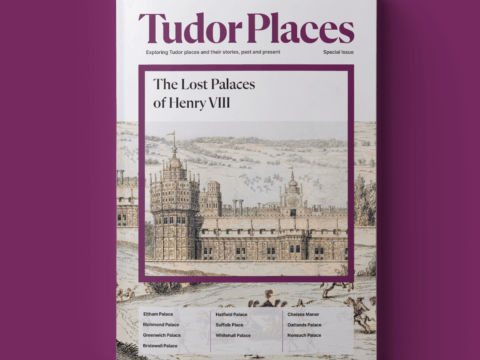Matthew Stuart: Life Story
Chapter 8 : To the Tower
In 1561, Mary, Queen of Scots, no longer welcome in France, returned to her native Scotland, having agreed that she would accept the newly implemented Protestant religious settlement, provided she herself could continue to hear the Catholic Mass. Lennox did not dare send Darnley to Scotland, but, instead, sent a member of his household, Arthur Lallart, to greet Queen Mary, and again petition for the return of his estates.
Lallart was not immediately successful, Mary responding cautiously that, being only recently returned to Scotland, she was not able to make any judgement on the matter. She hoped, however, that in future she might be able to help the Lennoxes.
The English government was increasingly alarmed by the information being relayed by spies in the Lennox household, and, just before Christmas 1561, messengers were sent to Settrington to arrest Lord and Lady Lennox and Lord Darnley. They were conveyed to Westminster, where Lennox and Margaret were confined to their apartments - but the royal guards lost sight of Darnley at some point, and he was next heard of in France.
Whilst Lennox was probably delighted that his son had escaped, it made his own position worse. He was sent to the Tower, whilst Lady Lennox was confined to house arrest with Sir Richard Sackville. This did not stop her writing a stream of letters, begging for Lennox’ release.
He was kept in strict confinement, and interrogated several times, but would admit nothing beyond having sent messengers to Scotland about the return of his estates, which could not possibly be construed as treason. Lennox did not respond well to confinement – his health declined, and he was reported by the Lieutenant of the Tower as exhibiting extreme rage.
As was customary, the Lennoxes were obliged to pay for their own imprisonment, and Lady Lennox complained that with no-one to manage their affairs, their estates were falling into ruin – she was even obliged to borrow money from Sackville to pay for Lennox.
Lennox remained in the Tower until December 1562, when Elizabeth, perhaps chastened by a brush with death from a bout of smallpox, agreed to allow him to join Margaret. The two were finally freed in the spring of 1563, when Elizabeth confirmed that she had forgiven and forgotten any offence – although she would not give them audience. Darnley returned home, and no action was taken against him.
Whilst Elizabeth did not much like her cousin Margaret Lennox, she absolutely loathed her other possible English heir, Lady Katherine Grey, who had infuriated her by a secret marriage to the Earl of Hertford and the production of a son. Determined to put the Greys in their place, Elizabeth allowed it to be thought that she would look favourably on Darnley, who was invited to court. She also decided to support Lennox in his petitions to Queen Mary for restoration of his lands.
The queen wrote to Scotland, and requested Mary to look encouragingly on Lennox’s suit. Mary, eager to please Elizabeth to gain her nomination as heir to the English crown, obliged.
Lennox and Margaret received Elizabeth’s permission to travel to Scotland, but almost immediately Elizabeth changed her mind and wrote to Mary, saying they could not leave England, and warning Mary that she should not favour the Lennoxes too much, lest she aggravate the Hamiltons. Mary, exasperated, replied that she had only shown favour to Lennox to please Elizabeth.
Elizabeth changed her mind again, and allowed Lennox to leave, provided Margaret and Darnley remained in England.
Lennox thus set foot in Scotland for the first time in over fifteen years, and for the first time as a potentially obedient subject since his defection to the English party in 1543. He made the most of the occasion, riding into Edinburgh preceded by twelve gentlemen in velvet coats and gold chains of office, and followed by another thirty. He was received by Queen Mary and her court, and on 9th October 1564 at the Mercat Cross in Edinburgh, his lands were restored, and the brand of a traitor removed.
It was not long before Lennox and his wife were hoping that their fortunes would rise even higher, as Darnley was being tipped as suitable candidate for Queen Mary’s second husband. Elizabeth seemed to favour the idea initially, but then declared that she wanted Mary to marry her own loyal friend, Lord Robert Dudley, promoted to the earldom of Leicester to make him palatable to the Scottish queen. Elizabeth taxed Mary’s envoy, Sir James Melville, with hoping for a match with Darnley.
Melville denied it, although he had been commissioned by his mistress to talk to Lady Lennox about how to obtain permission for Darnley to go to Scotland, both to see his parents’ native land, and return with Lennox to England.
Matthew Stuart, 4th Earl of Lennox
Family Tree




